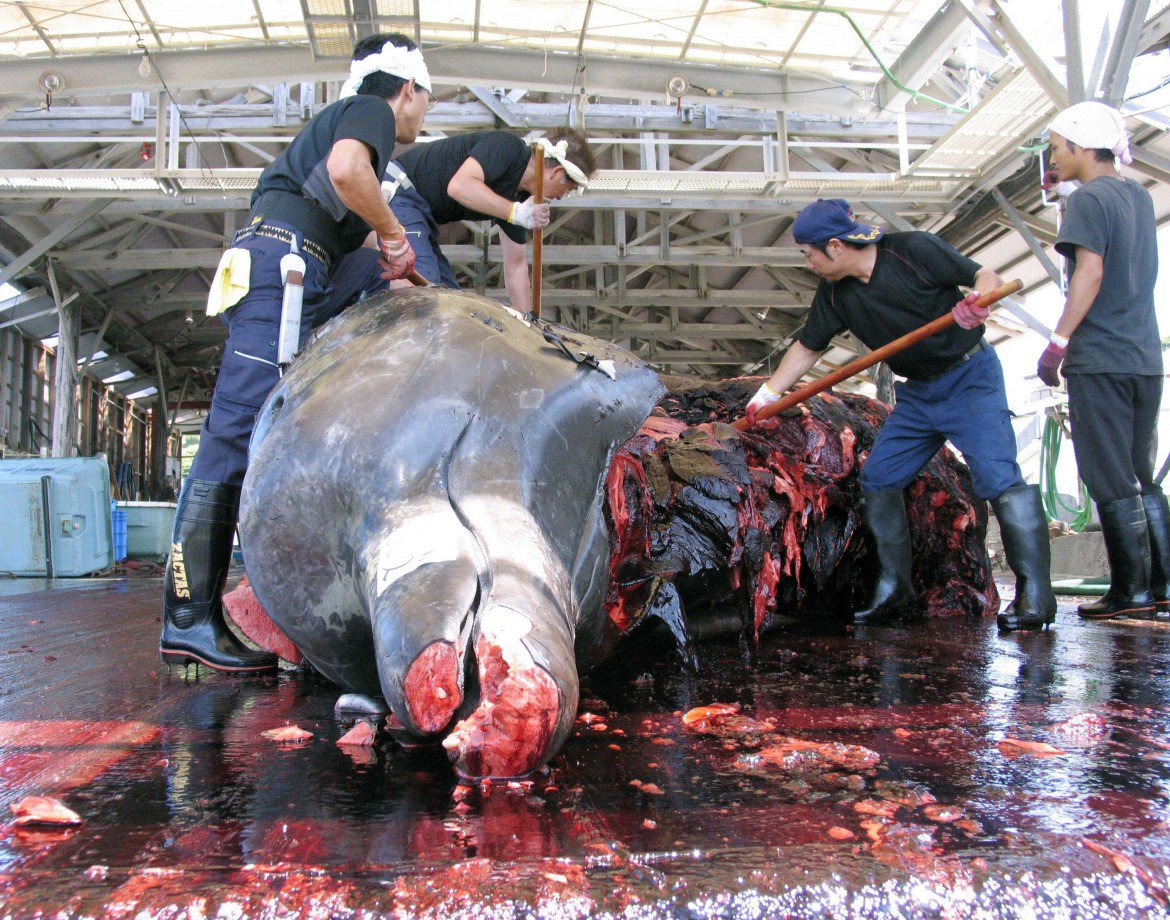Conservation
In Japan, killing whales is ‘research’
A year after an injunction by the International Court of Justice, Japan is launching a new expedition into a whale sanctuary under the guise of scientific inquiry.

The Nisshin Maru, a whaling vessel able to hold 8,000 tons of catch, has taken off again, toward the Antarctic. The same day, on Nov. 30, four other boats — three smaller whalers with harpoons and a surveillance ship guarding against attacks by Sea Shepherd activists — have left the archipelago country.
“There can be no happier day for the mayor of the city of whales,” the mayor of Shimonoseki, the city from which the ships launched, told the Mainichi Shimbun newspaper.
More than a year after an International Court of Justice ruling effectively blocked any new Japanese initiative to save whales, hunting — or, to use the official terminology of the Japanese government, the “research” — has re-commenced. It is indeed the first time in almost two years that Japanese ships have left for Antarctica to gather data on the population of whales in the South Pacific, including the ability to capture hundreds of specimens of minke whale.
Research that kills
The text of the program drawn up by the Fisheries Research Agency stresses the need to kill specimens for the collection of biological data and opens the door to collaborations with foreign researchers. As in the previous two research programs on cetaceans, JARPA and JARPA II, the New Scientific Whale Research Program (as it’s officially known) will in all likelihood take place in an area identified by the International Commission as the Southern Ocean Whale Sanctuary — a natural reserve of 50 million square kilometers around the South Pole. On paper, at least, it’s closed to hunting and lethal research methods.
“We want to bring home results that can be agreed upon and advance the knowledge and techniques of whaling,” said Mainichi Nobuo Abe, the captain of the Yushin Maru-2, one of the support vessels to the Nisshin Maru.
The stated goal of the new program is to arrive at the end of the moratorium on commercial whaling, which was established in 1986 by the International Whaling Commission. In the words of the president of the Japan Whaling Association, Keiichi Nakajima, interviewed by Al Jazeera in 2010, Japan wants to show with its scientific research that “commercial hunting can be sustainable and not detrimental to natural resources.”
In late March 2014, the international court, accepting a petition from Australia and other countries opposed to whaling, had in fact issued a ruling calling on the Japanese government to stop the second program of cetacean research, JARPA II, which had been under way since 2005. The court ended additional permits and authorizations for activities “not to scientific ends.”
The ruling, however, acknowledged that JARPA II could “generally be called a scientific program” but that its scope and, in particular, its extensive use of lethal methods for sample collection, were not related to scientific objectives, in truth unclear and very similar to those of the first program dating back to 1987.
Operation against ‘imperialism’
To insiders, the flashy launch of the expedition last Monday was a symbolic opposition to Western cultural “imperialism” that seeks to end the hunt for great whales, and a defense of the Japanese tradition of eating whale.
In fact, just search on Tabelog — the Japanese equivalent of TripAdvisor for restaurants — to see that whale meat continues to be served in the restaurants across the country. Whale meat came up at least 150 times in a recent search.
But how much do the Japanese actually eat whale? The answer is very little. In 2014, according to researcher Junko Sakuma, just 30 grams a year on average. Even so, despite falling prices, whale meat remains expensive.
Of course, some coastal regions of Japan have practiced whaling since ancient times. But until after World War II there has never been a tradition of eating the animals. After the war, however, whale meat was identified as a major source of fat and protein for a starving country. In the ’70s, with the emergency over, there was a boom of consumption driven by a government PR campaign to encourage public acceptance of whaling.
Today, part of the Japanese population wonders whether it’s necessary to continue whaling in the face of international criticism and an increasingly less profitable industry. One study showed that in 2011 it cost more than $45 billion to operate and maintenance the Japanese whaling fleet.
However, a monopoly of the Institute of Cetacean Research and its operational arm, Kyodo Senpaku, dominates the sector. They receive substantial subsidies from the government in Tokyo — perhaps for nefarious reasons. A 2010 investigation by Greenpeace revealed corruption in the issuance of hunting permits.
Originally published at http://ilmanifesto.info/caccia-alle-balene-il-giappone-ci-riprova/ on 2015-12-04
